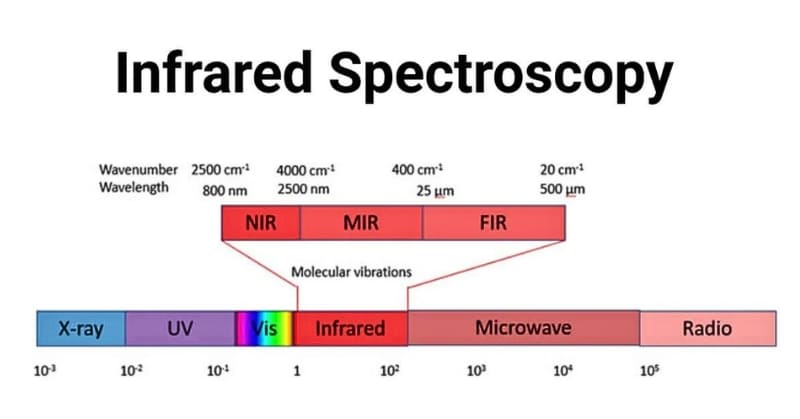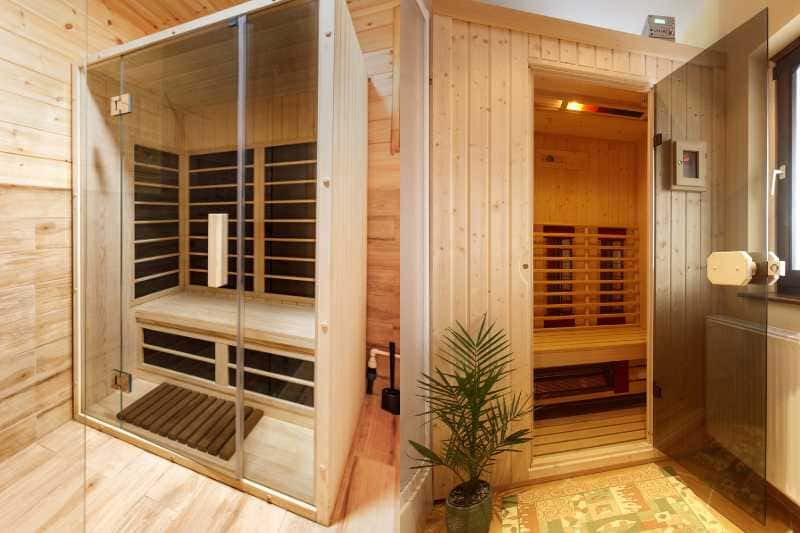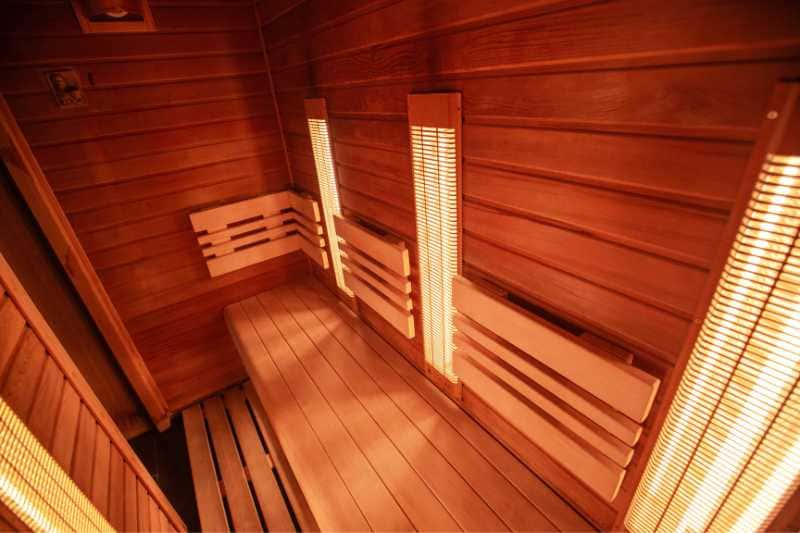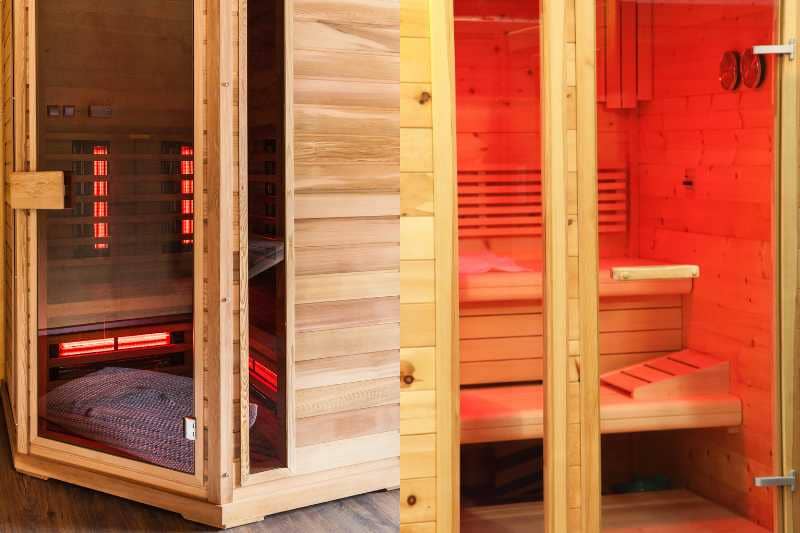Near vs Far Infrared Sauna: Which One Fits Your Health Goals Perfectly?

Ever wondered why stepping into an infrared sauna feels instantly uplifting, akin to the boost from a quick jog?
The secret lies in the type of infrared light—near or far—that each sauna uses. But with both options promising a host of benefits, how do you pick the right one for your health goals?
In this near vs far infrared sauna battle, let’s take a closer look at what they have to offer, and figure out together which one could be the missing puzzle piece in your wellness routine.
Key Takeaways
- Flexibility in Health Goals: Depending on personal health goals and conditions, users can choose between the targeted light therapy of near infrared or the deep heat of far infrared to maximize health benefits.
- Tailored Therapeutic Effects: Near infrared saunas excel in promoting skin health and aiding surface-level healing, while far infrared saunas are distinguished by their ability to penetrate deeply, offering profound relief and detoxification.
- Safety and Ease of Use: Both types of saunas are safe when used correctly. It’s important to stay hydrated, limit sessions to appropriate lengths, and consult healthcare providers if you have pre-existing conditions.
| Medical Disclaimer The information provided in this article is for educational purposes only and is not intended as medical advice. Always consult with a qualified healthcare professional before starting any new health regimen, including the use of saunas. The author and publisher of this content are not responsible for any adverse effects or consequences resulting from the use of any suggestions, preparations, or procedures described in this article. |
Table of Contents
Understanding Infrared Light
What is Infrared Light?
Infrared light, part of the electromagnetic spectrum, lies just beyond the visible red light. This range of wavelengths—from about 700 nanometers (nm) to 1 millimeter (mm)—is not visible but can be felt as heat.
Unlike ultraviolet light, which can cause sunburn and damage to the skin, infrared light heats the body directly, penetrating deeply into the tissues without harming the skin.
The Infrared Spectrum
The Infrared Spectrum is split into near, mid, and far types. Near and far infrared are commonly used for health benefits.

Health Benefits of Infrared Light
This cozy warmth isn’t just about feeling good; it offers numerous benefits:
- Detoxifies your body
- Relaxes your muscles
- Soothes aches
- Improves blood circulation
- Aids in weight loss
- Refreshes your skin
Just to back up some of these infrared sauna benefits, here are a couple of studies worth checking out:
A 2013 study highlighted by the NCBI suggests that sauna bathing can boost immune defense, making it a beneficial practice for athletes.
Research reported in the Biology of Sport journal determined that utilizing an infrared sauna can alleviate muscle soreness after exercise.
When you get how infrared light works, you can really make your sauna sessions count by focusing on your specific health goals.
Want a beginner’s guide to infrared saunas? Read my article on Infrared Sauna Basics.
What is Near Infrared Sauna?
Half of the sun’s energy is in near infrared (NIR) light. Near infrared light, a segment of the electromagnetic spectrum, is characterized by wavelengths ranging from about 700 nanometers (nm) to 1400 nm. It’s not visible to the human eye but can be felt as gentle warmth.
Near infrared light penetrates superficially (about three centimeters), impacting the skin and the underlying tissues. This shallow penetration stimulates cellular repair and regeneration, making it less intense than far infrared, which penetrates deeper.
Health Benefits Associated with Near Infrared Saunas
Near infrared saunas utilize this light to deliver health benefits that include skin rejuvenation, enhanced wound healing, and effective pain relief.
- Skin Rejuvenation: Near infrared saunas are lauded for their ability to enhance skin tone and elasticity. This is because near infrared light stimulates collagen production, which can reduce wrinkles and improve overall skin appearance.
- Wound Healing: The therapeutic light can accelerate tissue repair, which is beneficial in healing burns, cuts, and other skin injuries. This occurs as near infrared light promotes cell regeneration and reduces inflammation.
- Pain Relief: Exposure to near infrared light reduces inflammation and alleviates pain, which can be beneficial for people with chronic pain conditions like arthritis.
- Boosting your eye health: Research has highlighted that near-infrared light at 670 nm can boost eye health by improving color contrast sensitivity, which tends to decline as we age. It also energizes the cells in our retinas, providing protection and restoration without any damage to the eyes.
What is Far Infrared Sauna?
Far infrared light, which falls within the infrared spectrum, has wavelengths ranging from about from 3,000 nm to 0.1 mm. They may be weak in heating but go deep, about four centimeters.
Far infrared light generates heat gently, warming the body from the inside out, and is known for its ability to deeply penetrate muscle tissues and organs. This makes them comfy for many.

Health Benefits Associated with Far Infrared Saunas
Far infrared saunas leverage this deep-penetrating heat to offer numerous health benefits:
- Muscle Relaxation and Internal Healing: Unlike traditional saunas, far infrared saunas provide heat that penetrates well into the tissues, which can enhance muscle relaxation and internal healing.
- Detoxification: The deep penetration also stimulates sweat glands more effectively than traditional saunas, helping to release built-up toxins and promote cellular detoxification.
- Relaxation: The gentle heat of far infrared saunas helps in relaxation and stress relief, contributing to overall well-being and mental health.
- Improved Circulation: The heat increases blood flow, mirroring the effects of a gentle workout and aiding in muscle recovery and cardiovascular health.
- Enhanced Immune System: Consistent use of far infrared saunas can strengthen the immune system by enhancing the production of white blood cells and improving blood circulation, helping to prevent illness.
- Skin Rejuvenation: The increased circulation and deep sweating can also improve skin health, clearing pores and giving the skin a healthier glow.
- Weight Loss: There is evidence that the increased metabolic rate induced by the deep heat can help in weight loss, as the body burns calories during and after the session.
- Pain Relief: Heat therapy provided by far infrared saunas can help with chronic pain conditions such as arthritis, fibromyalgia, and muscle spasms by reducing inflammation and increasing flexibility.
A study in the Canadian Medical Association Journal suggests that far-infrared saunas could be advantageous for individuals with cardiovascular risk factors.
By blending far infrared sauna sessions into your regular health practices, you’re not just taking care of your body; you’re boosting your mental well-being, too.
Before comparing infrared options, explore my primer explaining the basics of saunas.
Comparative Analysis: Near vs Far Infrared Saunas
When deciding between near and far infrared saunas, understanding the different benefits of each can help tailor the choice to your specific health needs.
Penetration Depth
Far infrared saunas use longer wavelengths that penetrate deeper into the body, providing more intense heat that can reach deeper tissues and muscles. This deep penetration is ideal for those looking to enhance recovery from deep muscle injuries or chronic pain.
Near infrared saunas use shorter wavelengths that are less penetrating but offer more targeted surface healing, which is beneficial for skin health and surface tissue repair.
Heat Intensity
Far infrared saunas operate at higher temperatures compared to near infrared saunas. This can be an important consideration for those who prefer a more intense heat experience or for those who are specifically looking to induce a deeper sweat for detoxification purposes.
Health Benefits
Near Infrared: Particularly noted for its ability to stimulate collagen production and help heal the skin, making it ideal for cosmetic and surface healing purposes.
Far Infrared: Often recommended for deep tissue therapy, improving circulation, and aiding in the relief of muscle pain due to its deeper penetration.
Situational Preferences
Skin Health: Near infrared is preferable for those focusing on skin rejuvenation, wound healing, and improving skin conditions such as psoriasis or eczema because of its collagen-boosting capabilities.
Deep Muscle Relief: Far infrared is better suited for individuals looking to relieve deep-seated tension or pain, such as in conditions like fibromyalgia or deep muscle stiffness, due to its deeper penetrating heat.
Detoxification: Far infrared saunas might be more beneficial for those aiming to maximize detoxification due to the higher temperatures and deeper penetration, which are effective at inducing a more profound sweat.

Choosing the Right Sauna for You
When it comes to choosing the ideal infrared sauna, understanding your personal health goals and the distinct capabilities of near and far infrared saunas is crucial. Here’s how you can make an informed choice:
Factors to Consider When Choosing Between Near and Far Infrared Saunas
- Health Objectives:
- Determine if your primary health goal is to improve skin health, enhance wound healing, or relieve muscle and deep tissue pain.
- Near infrared saunas are more effective for surface-level treatments like skin rejuvenation, while far infrared saunas are better for deep tissue therapy and detoxification.
- Heat Tolerance:
- Far infrared saunas normally operate at higher temperatures compared to near infrared.
- Consider your personal comfort and tolerance for heat when making your decision.
- Installation Space and Budget:
- Evaluate the space available for installation and your budget.
- Far infrared saunas generally require more space and might be more expensive due to the complexity of the heating elements that provide deeper penetration.
Related: Best Infrared Sauna Guide
Tips on Selecting the Right Model Based on Personal Health Goals
- Medical Advice: Before deciding, consult with a healthcare provider, especially if you have health conditions that may affect your ability to use a sauna safely.
- EMF Levels: Make sure to look into EMF levels when choosing a sauna for your home or therapy. Lower EMF levels are preferable to minimize any potential long-term health risks
- Research Brands and Reviews: Look for sauna models that have positive reviews and are from reputable brands to ensure quality and reliability.
- Consider Additional Features: Some saunas come with extra features like chromotherapy or customizable controls which might enhance your sauna experience based on your personal preferences.
Explore our Best Rated Infrared saunas of 2024.
Safety and Considerations for Infrared Sauna Use
If you’re thinking about adding near and far infrared saunas to your health routine, it’s important to keep safety top of mind and follow the guidelines to make sure your sessions are both safe and beneficial.
Safety Aspects of Using Near and Far Infrared Saunas
- Hydration: It’s essential to stay well-hydrated before, during, and after sauna sessions, as the intense heat can lead to dehydration. Drinking water can help mitigate any negative effects of the heat.
- Time Limit: Limiting your sauna sessions to 20-30 minutes is advisable, especially for beginners, to avoid overheating and ensure a safe experience.
- Frequency: For optimal benefits without overexposure, it’s recommended to use infrared saunas no more than three to four times a week. This frequency allows the body adequate time to adjust to the heat and the detoxification process without causing stress.
- Temperature Control: While infrared saunas typically operate at a lower temperature than traditional saunas, it’s important to adjust the sauna temperature according to personal comfort and tolerance levels.
- Pre-existing Health Conditions: Individuals with cardiovascular issues, those who are pregnant, or anyone under medical supervision should consult a healthcare expert before using an infrared sauna.
Related: Dangers of Infrared Saunas

Recommendations for Sauna Use
- Gradual Introduction: Start with short sessions at lower temperatures and gradually increase the heat and duration as your body acclimatizes to the sauna environment.
- Avoid Alcohol: Alcohol consumption before sauna use can increase the risk of dehydration, hypotension, and dizziness. It’s best to avoid alcohol to maintain safety.
- Post-Sauna Cooling Down: After exiting the sauna, allow your body to cool down gradually. A cool shower can help regulate your body temperature and enhance the detoxification process.
- Regular Cleaning: Maintain the cleanliness of your infrared sauna so that there is no bacteria and mold growth, which can be harmful to health. Regular cleaning ensures a hygienic environment.
Stick to these safety practices and advice, and you’ll be able to enjoy the extensive health benefits of infrared saunas without any worries.
Conclusion
Near infrared and far infrared saunas both bring big health benefits. The key difference between near and far infrared saunas is how deep they go and how strong they heat.
Choosing between the two depends on what you want for your health and what feels best to you.
Picking a sauna, whether it’s near, far, or full spectrum, can really boost your well-being. It’s all about bringing this special infrared therapy into your life. Knowing how these types of saunas work helps you get the most out of them.
FAQs About Near vs Far Infrared Sauna
1. Is near infrared sauna better than far infrared sauna?
Near infrared saunas are effective for skin therapy and wound healing because of their ability to penetrate the skin’s surface. Far infrared saunas are better for deep tissue heating and overall relaxation as they penetrate deeper into the body. The choice depends on your health goals.
2. Does near or far infrared penetrate deeper?
Far infrared penetrates deeper into the body compared to near infrared. This deeper penetration is beneficial for muscle relaxation and improving circulation.
3. How long should you sit in a near infrared sauna?
The recommended duration to sit in a near infrared sauna is about 15 to 20 minutes. Listening to your body and adjusting the time based on your comfort and response is crucial.
4. What is the healthiest type of sauna?
The healthiest type of sauna depends on individual needs and preferences. Infrared saunas, particularly those emitting far infrared, are often considered healthier due to their ability to heat the body directly at a lower temperature, which is easier on the cardiovascular system.
5. Which infrared sauna has the lowest EMF?
Saunas designed with carbon fiber heaters tend to have the lowest EMF levels. When purchasing an infrared sauna, it’s important to check the manufacturer’s specifications for EMF measurements.
6. Does far infrared go through clothes?
Yes, far infrared rays can penetrate clothing, allowing the heat to reach the skin and deeper tissues. Lightweight, natural fabrics like cotton are the most permeable.

“Become a Sauna Expert Overnight!”
Grab Your “FREE” Sauna E-book NOW!
Get your hands on the ultimate sauna manual. From history to DIY setups, our free guide has it all.

As a Chartered Accountant turned sauna enthusiast, I bring a unique blend of analytical skills and hands-on experience to the world of heat therapy. With over a decade dedicated to researching and testing sauna products and practices, I’ve developed a deep understanding of this field. A the founder of HomeInDepth.com, I provide reliable, easy-to-understand information on all aspects of saunas. My goal is to guide you through every step of your sauna journey, offering meticulously researched, unbiased advice to help you make informed decisions and create your perfect sauna experience. I’m always happy to hear from sauna lovers like you—feel free to leave questions or share your own tips in the comments below so we can learn together. Contact me on:







3 Comments